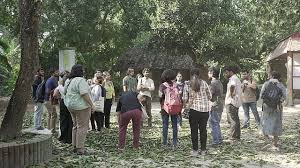
Festivals in Indian cities are more than celebrations—they are living museums of culture. Each festival transforms the urban landscape into a space where traditions, art, and community converge. Whether it’s Durga Puja in Kolkata, Ganesh Chaturthi in Mumbai, or Pongal in Chennai, these events act as immersive showcases of heritage that are accessible to all.
City festivals bring together multiple art forms at once. Pandals and idols display craftsmanship, while music, dance, and theatre add layers of performance. Food stalls serve traditional delicacies, making culinary art part of the cultural experience. Streets become galleries and stages, where creativity flourishes in public view.
What makes these festivals unique is their participatory nature. Unlike museums where art is observed quietly, festivals invite interaction. Citizens become co-creators, whether by decorating neighborhoods, performing in cultural shows, or organizing community rituals. This active involvement ensures that culture is not frozen in time but continues to evolve with each generation.
Modern technology has further amplified festivals as cultural platforms. Social media broadcasts local artistry to global audiences, while light installations and digital projections add contemporary flair. Yet, at their core, these festivals preserve traditions, stories, and rituals that have been practiced for centuries.
By acting as “living museums,” city festivals blur the boundaries between past and present. They remind us that culture is not limited to curated spaces but thrives in the rhythms of everyday life. In celebrating festivals, cities reaffirm their identities while showcasing India’s extraordinary diversity to the world.
